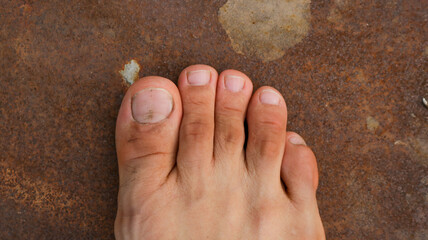Metatarsalgia
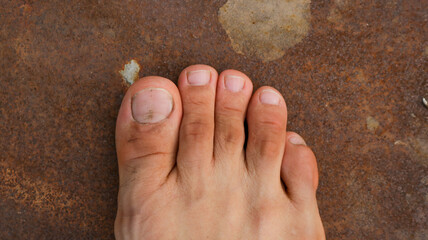
Introduction:
Metatarsalgia is a common injury caused by overuse. This term describes pain and swelling of the soles (ball) of the feet. It is usually regarded as a symptom of pathological condition other than a specific disease. You can develop this by participating in running activities. There are other reasons. Although metatarsalgia is usually not serious, it may discourage you. Luckily, home treatments such as ice packs and rest can usually relieve symptoms.
Metatarsalgia (metuhtahrSALjuh) is a painful inflammation of the feet in the area between the toes and the arch of the foot. Metatarsalgia is named so due to presence of 5 metatarsal bones in the middle part of foot those are connected to toes.
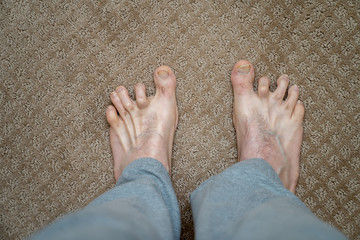
What are the signs and symptoms of Metatarsalgia?
The most common symptom of metatarsalgia is the pain at the one or more metatarsals end closest to the toe. However, mostly following signs and symptoms are also present:
- Tingling feeling or numbness in the toes.
- Pain usually worsens when walking or running.
- It feels like walking on a cobblestone.
- Pain may be severe, dull, or burning.
- Athletes participating in high-performance sports and are also suffering from inflammatory diseases such as bursitis are usually more prone to foot and metatarsal pain.
- If you run, stand up, perform high-performance exercises and walk without shoes, you may also find that the pain gets worse.
Pain usually starts to increase over a period of several months and does not start suddenly.
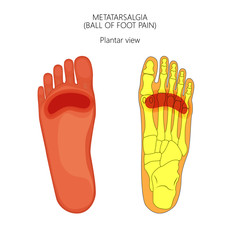
Causes associated with Metatarsalgia:
In some conditions only a single factor can cause metatarsalgia. Most commonly, there are several factors at play, including:
- Excessive activity
- Specific shape of foot
- Deformation of the foot
- Stress fractures and small cracks
- Inappropriate footwear
- Obesity
- Morton’s neuroma
- Densification of the Achilles tendon
- Hammer deformities of the toes
- Hyperactive bones of the first foot
- Flexor weakness (muscles)
- Excessive lateral movement of the foot when walking or running called pronation
- Fractures of toe or metatarsal caused by fatigue
- Bunion foot
- Ligament tear of feet
How to prevent?
Proper care of foot will help in avoiding metatarsalgia:
- Buy suitable shoes that are comfortable for you and if you run regularly, buy new shoes more frequently.
- Avoid wearing high heels.
- Practice using pads, support for arch, and various orthopedic products as recommended by your doctor.
- Avoid calluses build up. You can wet your feet and gently wipe the area using a pumice stone.
- Exercise regularly and do not become overweight.
- Gradually increase the amount and intensity of physical activity.
- Be sure to warm up before exercise.
Treatment Strategies:
Medication:
NSAIDs aid in relieving of pain for some time like:
- Ibuprofen (Advil, Nuprin and Motrin)
- Naptoxen (Aleve, Naprosen)
- In some cases, corticosteroid injections into the affected joint may provide temporary relief for a period of 1 to 3 months, but be careful.
Cortisone can loosen the restraints of the toe joints causing plantar tears. In this case, the toes may become more deformed causing deterioration of the claws and metatarsal pain will worsen.
If the compressed nerve is causing your pain, your doctor may prescribe a nerve block combined with a long acting steroid.
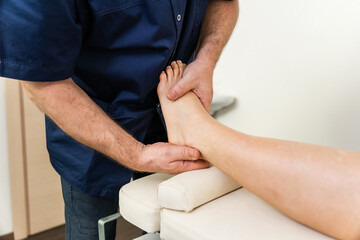
Surgical treatment for metatarsalgia:
Following approaches regarding surgery can be followed:
- The longest metatarsal bone is shortened
- The protruding metatarsal head is removed.
- Supports the treatment of common metatarsal pain such as hammer toe and hallux limitus.
- Gastrocnemius recession when the pressure on the forefoot needs to be relieved
Recovery from metatarsalgia:
As soon as pain vanishes, patient can strengthen stretching and strength training, and gradually return to normal activities. First, try low-impact sports like swimming.
How long does it takes?
Foot pain or metatarsal pain usually resolves after 6 to 8 weeks but activities during early recovery of the healed bones and joints will cause delayed healing. Failure to follow the treatment will double the recovery time and make the patient feel very frustrated. Early active conservative treatment is usually advised which help in preventing further bone or joint damage, such as stress fractures


